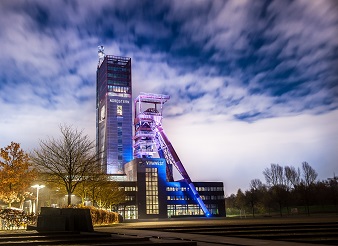Cleaner energy from coal

Related topics
Energy Innovation Industrial Leadership Leadership in enabling and industrial technologies Secure, clean and efficient energy Bulgaria Germany Greece Portugal United Kingdomdate: 09/12/2015
Project: Study of deep underground coal gasificat...
acronym: UCG&CO2 STORAGE
See also: Website
Coal is cheap to mine, easy to transport and abundant. So it’s not surprising that it produces over 40% of the world’s electricity, according to the International Energy Agency. But reserves are often hard to reach, and burning the fuel releases large amounts of CO2 and other pollutants into the atmosphere.
The UCG&CO2 STORAGE project showed that a new way to combine two techniques countering these concerns – underground coal gasification (UCG) and carbon capture and storage (CCS) – could be safe and cost effective.
Until now, projects that carry out UCG and CO2 storage have used separate boreholes for each process, and intended storage at another site. The eight-member consortium’s models and technical analyses used just the injection borehole to first oxidize the coal to produce synthesis gas and then return CO2.
UCG uses high temperatures to convert coal in-situ into gas for power plants, while on-site CO2 storage locks resulting CO2 back in the remaining cavities of the gasified seams (coal beds).
Project coordinator Nikolay Hristov of Overgas Inc. AD, Bulgaria’s largest privately-owned gas company says: “We can produce energy from very deep-located coal seams with UCG. In shallower deposits, we can also use thin seams that are currently not economically mineable.”
He adds that re-using the spaces left from the gasified coal is an ideal solution for permanent storage of CO2. “It would substantially reduce the carbon emissions of the coal gas without transportation or extra drilling costs.”
By cutting operational costs and environmental impacts, the EU-funded project’s approach makes UCG and CO2 storage more viable – helping to boost Europe’s energy security and cut carbon emissions.
Model outcomes
Careful assessment of possible risks was high on the project agenda. Alongside dialogue with stakeholders such as environmental organisations and government ministers, UCG&CO2 STORAGE developed its own 3D computer models to assess gasification and CO2 storage options.
These models were based on the large Dobrudzha Coal Deposit in Bulgaria. “The biggest challenges have occurred in the past because many companies using UCG have done this at only 600 m deep,” says Hristov. “We went to 1800 m, where the temperature and pressure are higher, improving the gas yield. The lower depth also reduces risks of leakage from mines and of damage along fractures.”
At the other end of the process, CO2 stores well at depth. Generally, the high pressures below 1600 m would keep it in a liquid form that ultimately turns into rock after combining with other minerals. However, to prevent migration of contaminants from the UCG cavities, CO2 storage under hydrostatic pressure was recommended.
Economic simulations of industrial scale projects demonstrated that under these conditions, about 20% of the total CO2 produced in this process could be stored underground.
Industry potential
As well as producing electrical power, coal gasification provides essential ingredients for liquid fuels and industrial chemicals, making the process more profitable.
Project details have been shared in publications and conferences in order to encourage more mines to investigate in the technology’s potential under their specific site conditions.
In addition, the team:
- identified additional EU coal basins where their technology would be suitable;
- produced an economic model for comparing it to other energy sources; and
- outlined where European laws could better support its development.
Combining UCG with CO2 capture is still very much a research area. The EU’s investment in models and research has helped to bring the technology closer to pilot stage, says Hristov.
Investigation of this technique’s safety has continued, for example in the EU-funded HUGE2 project, which ended in June 2014, and the ongoing COAL2GAS project, which will end in June 2017.
